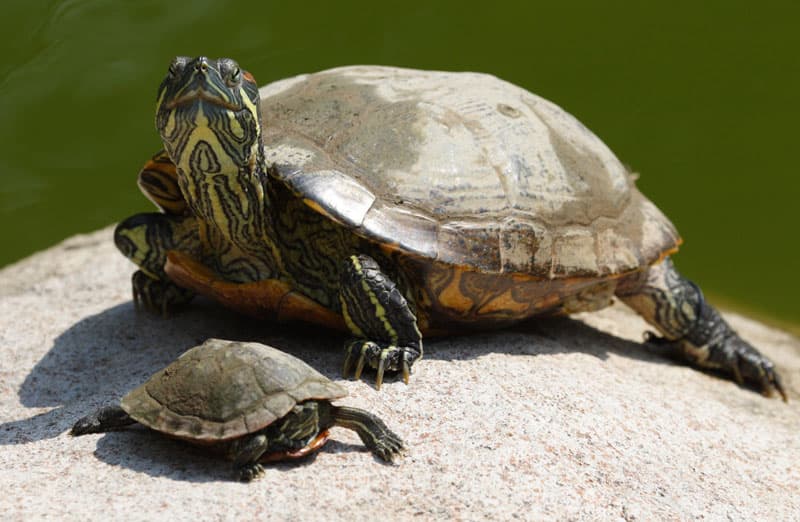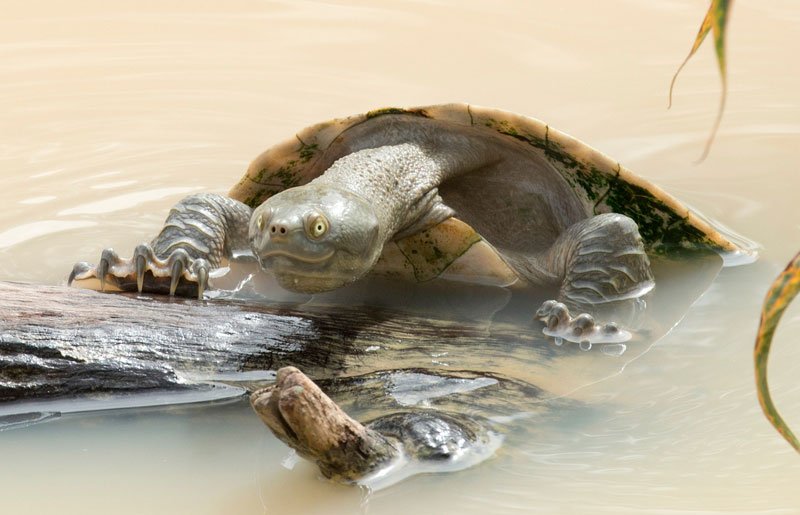Can Tortoises Swim? Everything You Need to Know
Tortoises are fascinating and unique creatures, but there are many misconceptions about their capabilities, especially concerning water. This article will answer your questions such as whether tortoises can swim, why they are not adept swimmers, and how to care for a tortoise that encounters water. We aim to provide you with valuable insights into the world of tortoises.

What Is the Difference Between Turtles and Tortoises?
Turtles and tortoises are both members of the reptilian order Testudines, meaning all tortoises are a type of turtle, but not all turtles are tortoises. The key distinction between the two lies in their habitats and physical adaptations. Sea turtles are primarily aquatic, with streamlined, lightweight shells and flippers or webbed feet designed for swimming. They spend most of their time in water, with only females coming ashore to lay eggs.
In contrast, tortoises are land-dwellers with heavy, dome-shaped shells that offer more protection on solid ground. Their sturdy, elephant-like legs are built for walking on land rather than swimming. Tortoises thrive in dry environments and are rarely, if ever, found in water.
Understanding these differences helps clarify why tortoises are not suited for aquatic life, setting the groundwork for our next discussion point.
Can Tortoises Swim?
Tortoises cannot swim. Unlike turtles, which are built for life in the water, tortoises are terrestrial creatures designed for land. Their heavy, dome-shaped shells and thick, clawed feet are well-suited for walking on land but make swimming nearly impossible. While some tortoises may float for a short period due to the air in their lungs, they lack the physical adaptations, such as flippers or webbed feet, that would allow them to propel themselves in water. If left in deep water, tortoises will likely struggle and eventually drown.
Tortoises can sometimes be seen soaking in shallow water to cool off or hydrate, but they need to have solid ground beneath them. Placing them in deep water, even if they seem to float, can cause stress and potential danger, as they are not naturally equipped for aquatic environments.
Therefore, while tortoises enjoy water for bathing, they should never be left unattended in deep water, as it poses a significant drowning risk.
Why Are Tortoises Not Good Swimmers?
Several biological and physiological factors contribute to the inability of tortoises to swim effectively. These factors ensure that tortoises remain land-based animals and avoid swimming or deep water.
Due to these factors, it is clear that tortoises are not equipped to handle aquatic challenges and should be kept away from large bodies of water to ensure their safety.
Can a Tortoise Survive in Water?
While a tortoise might survive a brief encounter with shallow water, it is not built for prolonged or frequent submersion. It is highly risky to expose them to water environments.
Keeping your tortoise in a habitat that mimics its natural, dry environment is crucial to avoid accidental drowning or health complications related to water exposure.
What to Do If Your Tortoise Falls into Water?

By following these steps, you can help ensure your tortoise remains safe and healthy even after an accidental fall into water.
Conclusion
Tortoises are not built for aquatic environments and cannot swim. Understanding their anatomical differences, why they aren’t good swimmers, and the potential dangers of water can help you provide a safe and healthy environment for your pet tortoise. If an accident occurs, quick action and proper care are essential.
FAQs
What is the lifespan of a tortoise?
Tortoises can live for quite a long time, often ranging from 50 to over 100 years, depending on the species and the care they receive.
Are there any aquatic tortoises?
No, there are no tortoises that live in aquatic environments. Only sea turtles have adapted to thrive in water.
Can tortoises float?
Yes, tortoises can float for short periods. However, this should not be confused with swimming, and floating can still pose significant risks to their health.
